Discover the enchanting world of japanese desserts—a realm where tradition meets innovation, and every bite tells a story of art, culture, and passion. Japanese desserts captivate with their delicate flavors, unique textures, and aesthetic presentation. In this comprehensive guide, we explore classic confections, modern twists, and easy recipes that bring authentic Japanese sweetness right into your kitchen. Whether you are a culinary enthusiast or a novice baker, this article will take you on a sweet journey through Japan’s rich dessert heritage.
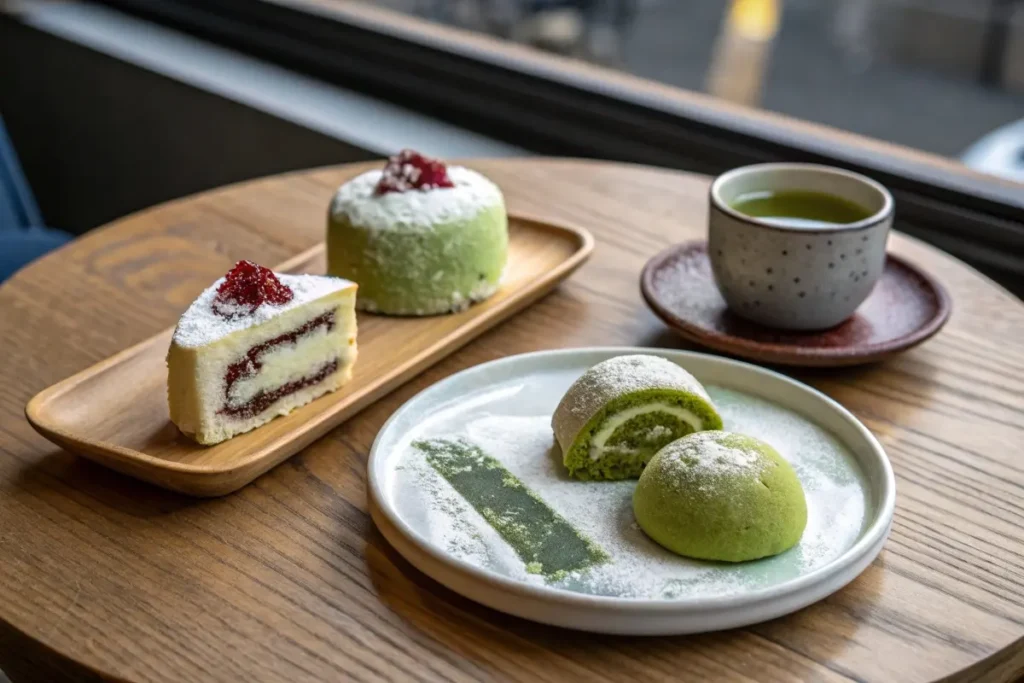
Discover more traditional recipes to further explore Japan’s culinary artistry.
Table of Contents
Overview of Japanese Desserts – Unique Flavors & Techniques
Japanese desserts are celebrated for their subtle sweetness and artistic presentation. Unlike Western sweets, these treats emphasize natural flavors and balance, often featuring ingredients such as red bean paste, matcha, and yuzu. This section delves into the philosophy behind Japanese confections, exploring the refined techniques that transform simple ingredients into works of art.
The Essence of Japanese Sweetness
Japanese desserts prioritize harmony and simplicity. Rather than overpowering the palate with intense sweetness, they offer gentle layers of flavor. Traditional ingredients—like azuki beans, rice flour, and sweet potatoes—are often combined with natural sweeteners such as honey or rice syrup. The result is a delicate, balanced treat that honors the natural essence of each ingredient.
- Artistic Presentation: Every dessert is crafted with an eye for aesthetics. From the subtle brush strokes on a wagashi to the careful layering in a parfait, presentation is as crucial as taste.
- Seasonal Influence: Many Japanese sweets are designed to reflect the seasons. Cherry blossoms in spring, vibrant autumn leaves, and the crispness of winter all influence the color, shape, and flavor of these desserts.
- Mindful Craftsmanship: The process of making these treats is a meditative art. Traditional methods, often passed down through generations, require patience, precision, and respect for nature.
Techniques Behind the Craft
Japanese dessert-making relies on specific techniques that enhance both flavor and visual appeal:
- Steaming & Boiling: Methods like steaming preserve the natural moisture and texture of ingredients, ideal for delicate sweets such as mochi.
- Kneading & Pounding: The meticulous process of pounding rice or glutinous flour creates a smooth, elastic texture in desserts like daifuku.
- Molding & Shaping: Many desserts are hand-shaped into forms that evoke natural elements—a testament to the Japanese reverence for nature.
Throughout history, these methods have evolved, yet remain rooted in a deep appreciation for balance and beauty. The techniques are not merely culinary processes; they are expressions of cultural identity and artistry.
Internal link: For more insights into Japanese culinary traditions, explore the Japanese Steak Recipe, which also celebrates precision and flavor balance.
Key Ingredients in Japanese Desserts
At the heart of japanese desserts are the ingredients that lend them their distinctive taste and texture. In this section, we break down the essential components and how they contribute to the overall sensory experience.
Staple Ingredients and Their Roles
- Azuki Beans
Azuki beans are the cornerstone of many Japanese sweets. They are typically cooked down into a smooth, sweet red bean paste (anko) that serves as a filling or topping in various desserts.- Nutritional Note: Rich in protein and fiber, azuki beans offer a healthy alternative to heavily processed sweets.
- Rice Flour and Glutinous Rice
Rice flour and glutinous rice form the base of many traditional treats. They are used to create mochi, a chewy, soft dessert that can be enjoyed plain or filled with sweet pastes.- Technique: Pounding glutinous rice in a traditional mortar helps achieve the desired sticky, smooth consistency.
- Matcha (Green Tea Powder)
The vibrant, earthy flavor of matcha is both a flavor enhancer and a visual delight. It is used in everything from cakes to ice creams, imparting a natural green hue and a subtle bitterness that perfectly contrasts with sweetness. - Yuzu and Citrus
Yuzu, a unique citrus fruit, introduces a refreshing tang to desserts. Its fragrant zest is often used in syrups and sauces, creating a balance between sweet and tart. - Sweeteners
Traditional sweeteners like rice syrup, honey, and even maltose are preferred over refined sugars. They offer a milder sweetness that preserves the natural flavors of the dessert ingredients.
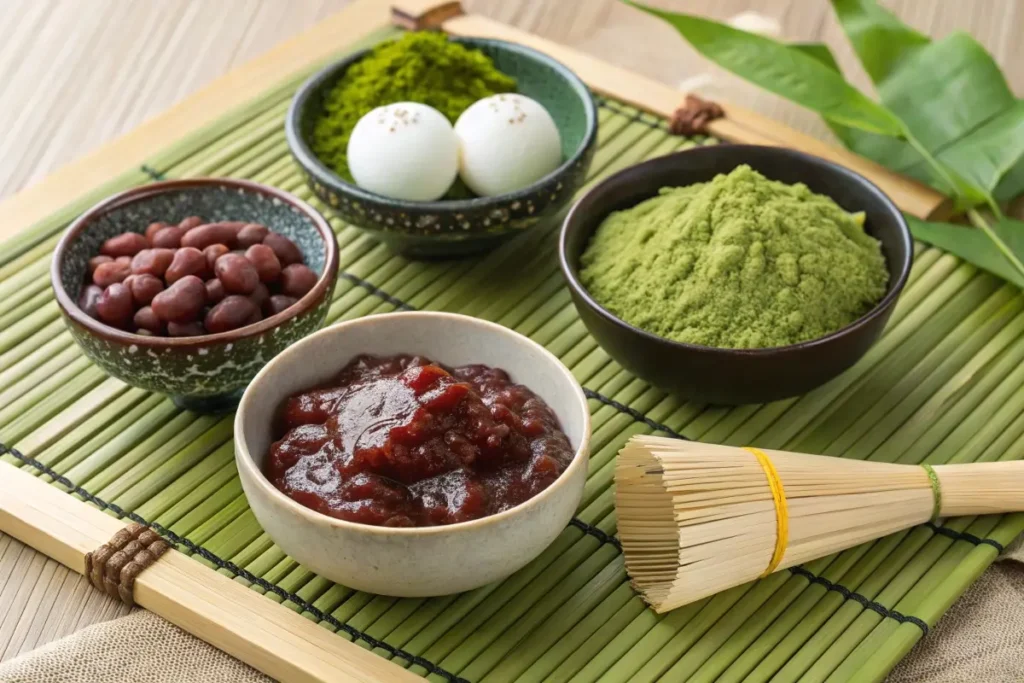
Integrating Flavors for Harmony
The magic of Japanese desserts lies in the thoughtful integration of these ingredients. Chefs often balance the inherent bitterness of matcha with the natural sweetness of red bean paste, or the tanginess of yuzu with the mellow texture of mochi. This interplay creates a multi-dimensional flavor profile that is both delicate and complex.
Internal link: For creative dessert pairings, check out our Japanese Vegan Recipes, where natural ingredients shine in every dish.
Traditional Japanese Sweets & Cultural Significance
Traditional Japanese sweets, or wagashi, are more than just confections—they are cultural artifacts that convey history, aesthetics, and philosophy. This section explores the origins, evolution, and cultural importance of these timeless treats.
The World of Wagashi
Wagashi are handcrafted desserts that reflect the seasonal beauty of Japan. Each piece is designed to evoke nature’s elements:
- Seasonal Motifs: Many wagashi are inspired by nature—cherry blossoms in spring, maple leaves in autumn, and snow in winter. Their shapes, colors, and textures are carefully chosen to resonate with the season.
- Symbolism: Beyond their taste, these sweets often carry symbolic meanings. For instance, the round shape of a mochi symbolizes the cyclical nature of life, while the layered designs in dorayaki suggest abundance and harmony.
Crafting Techniques & Presentation
The meticulous process of creating wagashi involves several traditional techniques:
- Handcrafting: Unlike mass-produced desserts, wagashi are made entirely by hand. This artisanal process ensures that every piece is unique.
- Aesthetic Presentation: The beauty of wagashi lies in their presentation. They are often served in beautifully crafted boxes or on elegant trays, enhancing the dining experience.
- Cultural Rituals: Wagashi frequently accompany traditional tea ceremonies, where their subtle sweetness complements the bitter taste of matcha tea, creating a perfect balance.
The Role of Wagashi in Celebrations
Wagashi are integral to many Japanese festivals and ceremonies. They are served during tea ceremonies, offered as gifts during seasonal celebrations, and enjoyed during special occasions like the Japanese New Year. Their presence is a reminder of the importance of mindfulness and appreciation of beauty in everyday life.
Internal link: Learn more about traditional recipes by visiting our Traditional Japanese Desserts Recipe page, where history meets taste.
Modern Twists on Japanese Desserts
While tradition forms the backbone of Japanese sweets, contemporary chefs have reinvented these classics by blending modern techniques with age-old recipes. In this section, we explore innovative adaptations that maintain the essence of japanese desserts while appealing to modern palates.
Fusion Desserts
Modern Japanese desserts often fuse traditional flavors with international techniques:
- Matcha Cheesecake: Combining the rich creaminess of cheesecake with the distinctive flavor of matcha creates a dessert that is both indulgent and refreshing.
- Red Bean Parfaits: Layered parfaits featuring red bean paste, matcha jelly, and mochi cubes offer a delightful mix of textures and flavors.
- Mochi Ice Cream: A global favorite, mochi ice cream wraps creamy ice cream in a chewy mochi shell, bringing together the best of both worlds.
Presentation & Innovation
The modern presentation of Japanese desserts is as important as taste:
- Minimalist Aesthetics: Inspired by traditional Japanese design, contemporary presentations favor simplicity, clean lines, and natural colors.
- Creative Plating: Desserts are often served on handcrafted plates or in artistic bowls, transforming the dining experience into a visual feast.
- Experimental Flavors: Chefs are experimenting with unconventional ingredients like lavender, black sesame, and even savory elements to create surprising yet harmonious desserts.
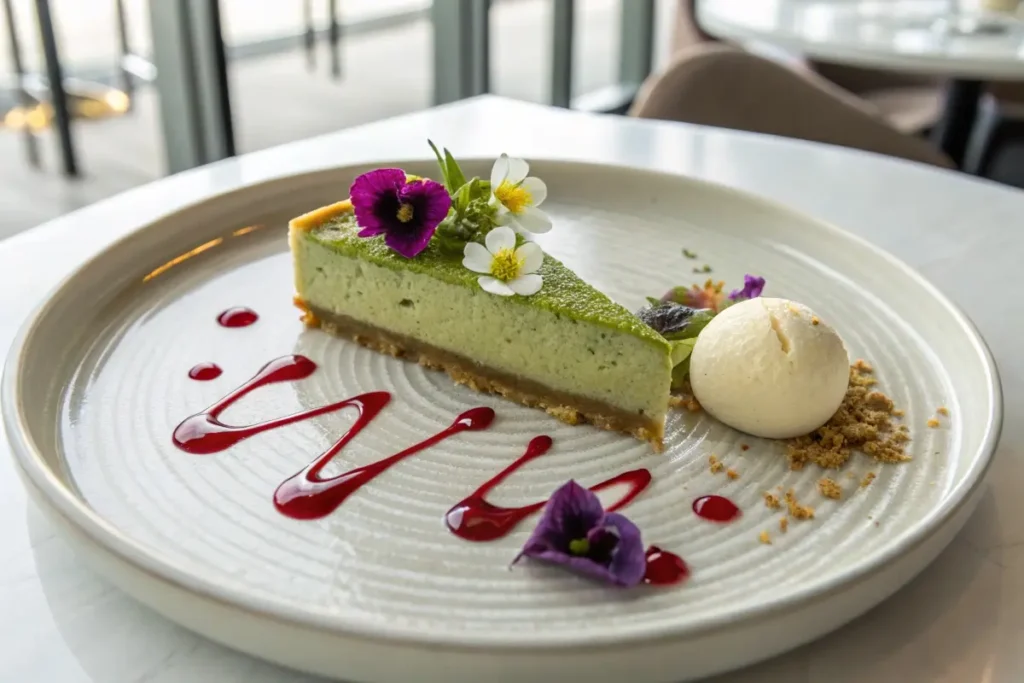
Internal link: For more innovative ideas, explore our Japanese Curry Recipe One Piece, which similarly fuses tradition with modern flair.
Embracing Global Trends
The influence of globalization is evident in the way Japanese desserts have evolved. Chefs now incorporate elements from Western desserts, such as creamy custards and crispy pastry bases, while still preserving the signature flavors of Japan. This blend of cultures results in desserts that are both exotic and familiar, appealing to a wide range of tastes.
Creating Easy Japanese Desserts at Home
For those inspired to try their hand at making Japanese sweets, this section offers practical tips and simple recipes that can be prepared in your own kitchen. You don’t need to be a master chef to create authentic japanese desserts—with the right ingredients and techniques, you can bring a taste of Japan to your table.
Essential Tools & Ingredients
Before starting, ensure you have these basic tools:
- Steamer or Rice Cooker: Essential for making mochi and other steamed desserts.
- Mortar and Pestle: Useful for pounding ingredients like glutinous rice.
- Fine Mesh Strainer: For achieving smooth textures in pastes.
- Traditional Molds: Optional, but they add an authentic touch to your presentation.
Stock your pantry with these key ingredients:
- Glutinous rice flour
- Azuki beans (or red bean paste)
- Matcha powder
- Natural sweeteners (rice syrup, honey)
- Fresh fruits for garnish
Step-by-Step Easy Recipe: Mochi with Red Bean Filling
- Prepare the Red Bean Paste:
- Soak azuki beans overnight, then boil until soft.
- Mash the beans and sweeten with a little rice syrup.
- Make the Mochi Dough:
- Mix glutinous rice flour with water and a pinch of salt.
- Steam the mixture until it becomes a sticky, elastic dough.
- Assemble the Mochi:
- Dust your hands with cornstarch, flatten a small portion of dough, and place a spoonful of red bean paste in the center.
- Carefully wrap the dough around the filling and shape into a ball.
- Serve and Enjoy:
- Garnish with a dusting of matcha powder or a drizzle of sweet syrup for an extra flavor boost.
This simple recipe is perfect for beginners and offers a hands-on way to experience the charm of traditional Japanese desserts in your own home.
Internal link: For more easy recipes, visit our Japanese Vegan Recipes, which provide creative ideas for plant-based treats.
History and Context: The Evolution of Japanese Desserts
Japanese desserts have a storied history that mirrors the country’s cultural evolution. Originally influenced by Chinese confections, Japanese sweets evolved over centuries, incorporating local ingredients and aesthetic principles that emphasize simplicity, seasonality, and balance.
A Journey Through Time
In ancient Japan, desserts were reserved for the elite, often served during tea ceremonies and special festivals. Early sweets were modest—crafted from rice flour, sweetened with natural sugars, and decorated with edible flowers or seasonal motifs. As trade and cultural exchange increased, new ingredients like azuki beans and exotic spices found their way into Japanese kitchens, transforming local dessert recipes.
During the Edo period, the art of confectionery blossomed. Wagashi artisans honed their skills, creating intricate sweets that not only delighted the palate but also pleased the eye. The emphasis on seasonal aesthetics became a hallmark of Japanese desserts, with each treat designed to reflect nature’s transient beauty. This period saw the birth of many classic desserts that remain popular today.
The modern era has witnessed a renaissance in Japanese desserts. With the advent of globalization, traditional recipes have merged with modern culinary techniques. Today, chefs balance innovation with tradition, reimagining classic sweets while preserving the cultural essence of Japanese desserts. This evolution is a testament to Japan’s enduring love for beauty, simplicity, and the art of subtle sweetness.
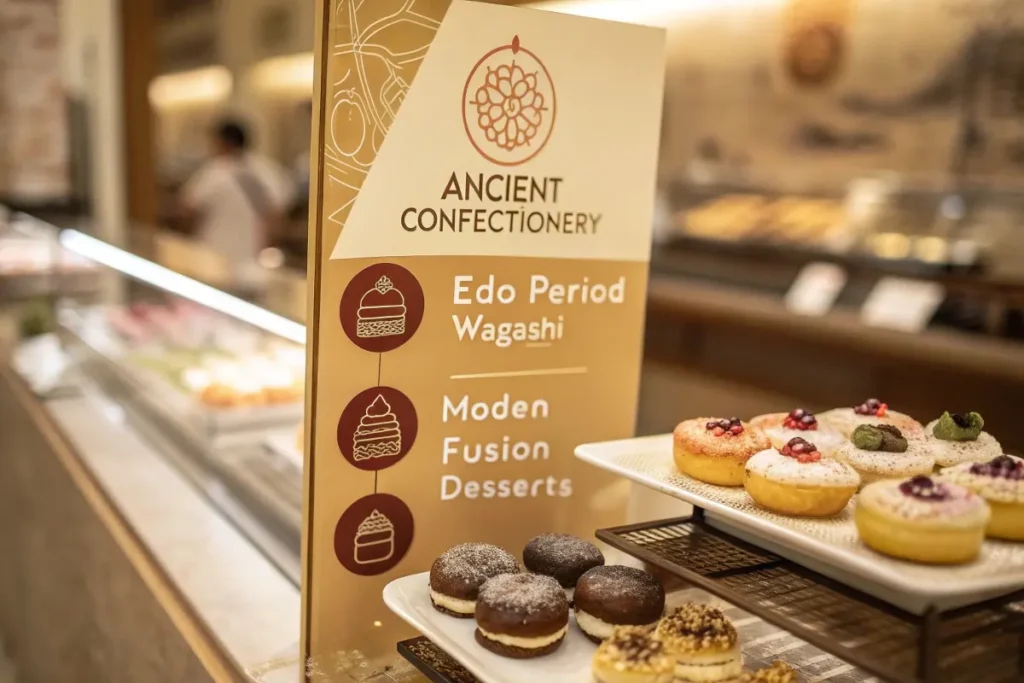
Practical Examples and Use Cases: Bringing Tradition Home
Japanese desserts are not only culinary delights but also an expression of cultural heritage that can be adapted for everyday enjoyment. Here are some practical examples and use cases that illustrate how these desserts can be incorporated into modern life.
Celebratory Occasions
Many Japanese families prepare traditional sweets during festivals and celebrations, such as the Japanese New Year. These desserts are often symbolic:
- Mochi: Represents longevity and good fortune.
- Dorayaki: A popular treat enjoyed during casual gatherings.
- Seasonal Wagashi: Often served during tea ceremonies to enhance the celebration with subtle flavors that match the time of year.
Modern Entertaining
For those looking to entertain guests with a touch of sophistication, Japanese desserts offer an elegant alternative to conventional sweets:
- Plated Desserts: Arrange a selection of mini wagashi, artfully plated with a drizzle of matcha syrup and fresh fruit.
- DIY Dessert Stations: Host a dessert-making party where guests create their own mochi or decorate traditional sweets with seasonal garnishes.
Daily Indulgence
Even in everyday life, a small serving of Japanese dessert can provide a moment of mindfulness and pleasure. Whether enjoyed as an after-dinner treat or a mid-afternoon snack, these confections encourage savoring the present moment.
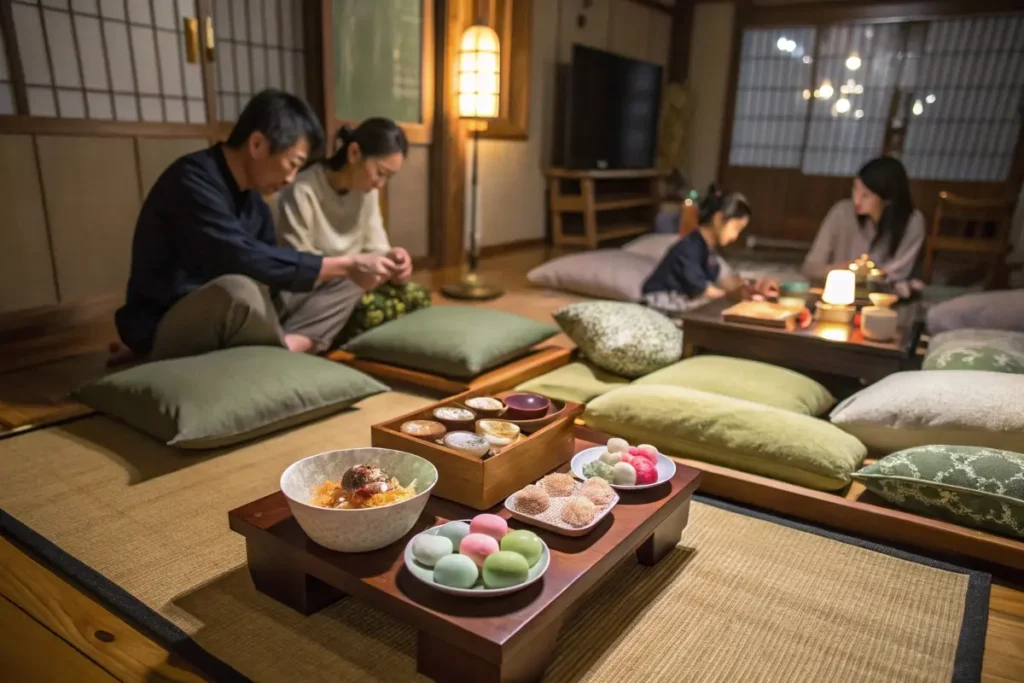
Internal link: For more inspiration on traditional Japanese recipes, check out our Japanese Dessert Recipes page.
FAQs: Your Questions on Japanese Desserts Answered
Below are answers to some of the most frequently asked questions about japanese desserts. These insights help demystify the art of Japanese confectionery and offer practical advice for both enthusiasts and beginners.
1. What are popular Japanese desserts?
Japanese desserts include a variety of treats such as mochi, dorayaki, daifuku, anmitsu, and castella. Each dessert offers a unique balance of sweetness and texture, often reflecting seasonal influences.
2. What are the 9 common desserts in Japan?
While the number may vary, some common Japanese desserts include:
- Mochi
- Dorayaki
- Daifuku
- Manju
- Anmitsu
- Castella
- Taiyaki
- Yokan
- Dango
These desserts are enjoyed during festivals, tea ceremonies, and daily meals.
3. What is the traditional sweet of Japan?
The traditional sweet, or wagashi, is typically made from natural ingredients like rice flour and azuki beans. These sweets are carefully crafted to mirror the seasonal beauty of Japan and are an integral part of tea ceremonies.
4. What dessert is typically served for Japanese New Year?
For Japanese New Year, mochi is especially significant. It symbolizes longevity and prosperity and is often prepared in a ceremonial style to mark the beginning of a new year.
5. Can I easily make Japanese desserts at home?
Absolutely. Many Japanese desserts are surprisingly simple to prepare with basic ingredients. Recipes for mochi, dorayaki, and other sweets are widely available and can be adapted for home kitchens, allowing you to enjoy a taste of Japan any day.
Internal link: For additional dessert tips, visit our Japanese Recipes collection.
Conclusion: Savor the Sweetness of Tradition
Japanese desserts embody a delicate balance of flavor, art, and culture. They invite us to slow down, appreciate the beauty in simplicity, and savor the moment with every bite. Whether you are enjoying a traditional mochi, experimenting with a modern fusion dessert, or simply admiring the artistry of wagashi, these sweets offer an immersive journey into Japan’s rich culinary heritage.
By embracing both time-honored techniques and innovative twists, you can create memorable dessert experiences that bring a touch of Japan into your everyday life. So why not indulge your sweet tooth, try a new recipe, and discover the magic of japanese desserts for yourself?
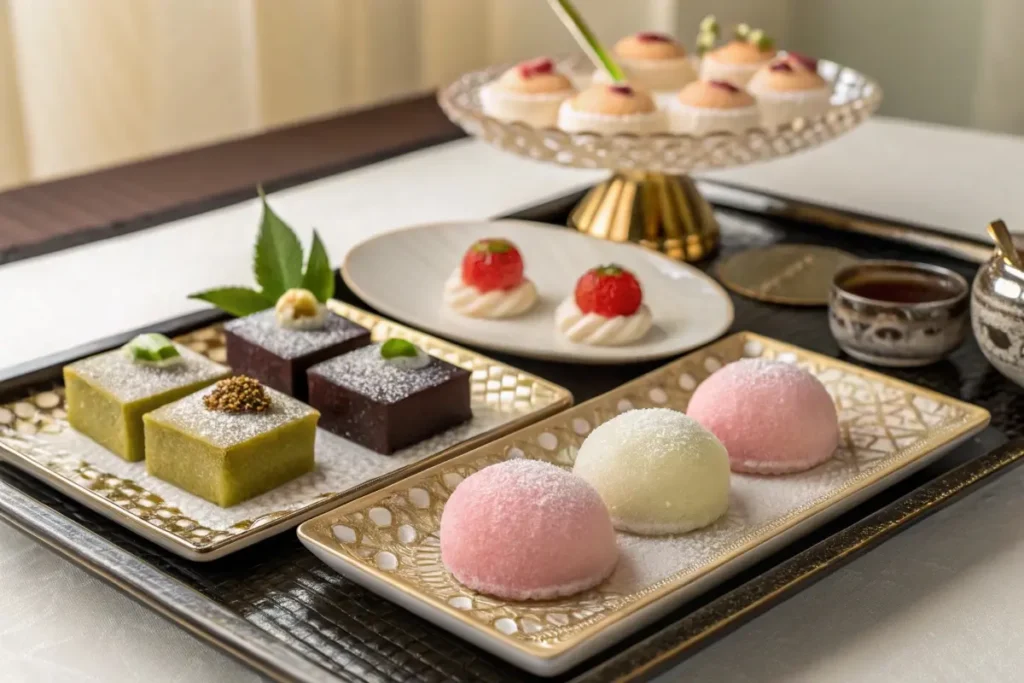
Internal link: For more culinary adventures, explore our Japanese Chicken Fried Rice Recipe and discover the fusion of tradition and innovation in Japanese cuisine
